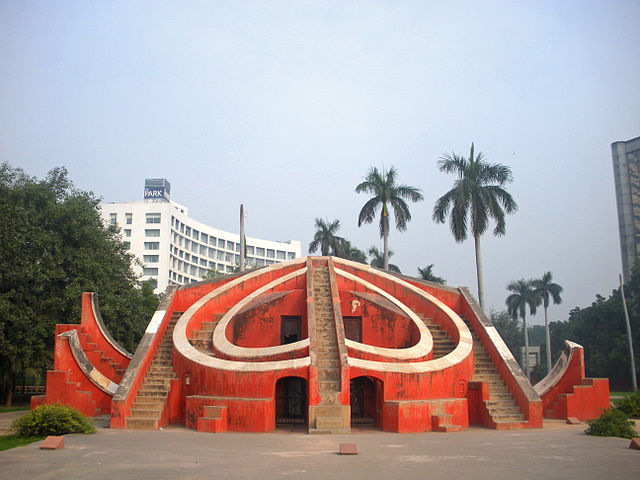Jantar Mantar, a term derived from Sanskrit, translates to “instrument for measuring the harmony of the heavens.” It stands as a testament to India’s rich scientific heritage and architectural brilliance. Built by Maharaja Jai Singh II, these astronomical observatories dot various cities across India and offer a fascinating glimpse into the celestial wonders that have captivated humanity for centuries.
History and Significance
Early Origins
The concept of Jantar Mantar dates back to the early 18th century when Maharaja Jai Singh II, a keen astronomer and mathematician, envisioned structures that could accurately observe and measure celestial movements.
Purpose of Construction
The primary objective behind the construction of Jantar Mantar was to create instruments capable of tracking the positions of celestial bodies, predicting eclipses, and determining auspicious timings for various activities.
Architectural Marvels of Jantar Mantar
Instruments and Their Functions
Each Jantar Mantar site boasts a collection of architectural instruments, including sundials, equinoctial dials, and celestial globes, meticulously designed to fulfill specific astronomical calculations.
Astronomical Significance
These instruments served as invaluable tools for astronomers to study celestial phenomena, navigate maritime routes, and formulate calendars essential for agricultural and religious practices.
Jantar Mantar Sites Across India
Locations and Features
Jantar Mantar sites are scattered across India, with prominent locations in Varanasi, Delhi, Jaipur, and Ujjain, each offering a unique perspective on ancient astronomical practices.
Preservation Efforts and Challenges
Conservation Initiatives
Despite concerted conservation efforts, Jantar Mantar faces challenges such as urban encroachment, environmental degradation, and structural decay, necessitating sustained preservation initiatives.
Threats to the Structures
The delicate nature of Jantar Mantar’s architectural elements requires constant vigilance against natural calamities, vandalism, and insufficient maintenance.
Visiting Jantar Mantar Today
Tourist Attractions
Jantar Mantar sites have evolved into popular tourist destinations, attracting visitors from around the globe eager to witness the fusion of science and artistry.
Guided Tours and Facilities
Visitors can partake in guided tours, interactive exhibits, and educational programs that unravel the mysteries of Jantar Mantar’s celestial wonders.
Scientific Legacy and Cultural Importance
Contributions to Astronomy
The legacy of Jantar Mantar transcends time, influencing advancements in astronomy, mathematics, and architecture, while fostering a deeper understanding of the cosmos.
Cultural Festivals and Events
Jantar Mantar serves as a cultural hub, hosting festivals, seminars, and star-gazing events that celebrate India’s astronomical heritage and promote scientific literacy.
Impact on Modern Science and Technology
Influence on Contemporary Astronomy
The principles and methodologies pioneered at Jantar Mantar continue to resonate in modern astronomy, shaping our understanding of the universe and guiding space exploration endeavors.
Inspiration for Architectural Design
The geometric precision and architectural ingenuity of Jantar Mantar have inspired contemporary designers and engineers, leaving an indelible mark on architectural aesthetics.
Jantar Mantar in Popular Culture
References in Literature and Cinema
Jantar Mantar’s mystique has permeated literature, cinema, and folklore, becoming a symbol of intellectual curiosity and human ingenuity.
Symbolism in Art and Music
Artists and musicians draw inspiration from Jantar Mantar’s celestial motifs, infusing their creations with the enchanting allure of the cosmos.
Educational Significance
Role in Academic Studies
Jantar Mantar serves as a living laboratory for students and scholars, offering unparalleled opportunities for hands-on learning and interdisciplinary research.
Educational Programs and Workshops
Educational institutions and heritage organizations conduct workshops and seminars at Jantar Mantar, fostering scientific inquiry and cultural appreciation among future generations.
Community Engagement and Awareness
Public Outreach Activities
Community-driven initiatives raise awareness about Jantar Mantar’s historical significance and advocate for its preservation as a shared cultural heritage.
Educational Campaigns
Collaborative efforts between government agencies, NGOs, and local communities promote responsible tourism and environmental stewardship around the historical sites.
Future Prospects and Development
Projects for Preservation and Enhancement
Ongoing restoration projects aim to safeguard Jantar Mantar’s architectural integrity and enhance visitor experiences through innovative interpretive exhibits.
Integration with Tourism and Education
Efforts to integrate Jantar Mantar into broader tourism and educational frameworks seek to promote sustainable development and foster cultural exchange.
Global Recognition and UNESCO World Heritage Status
Nomination and Acceptance
Several astronomical observatories in India have been inscribed as UNESCO World Heritage Sites, receiving international recognition for their historical significance and architectural splendor.
Implications for Conservation
UNESCO recognition underscores the need for comprehensive conservation strategies that balance preservation with responsible tourism and community engagement.
Conclusion
Jantar Mantar stands as a timeless testament to India’s scientific prowess and cultural heritage, beckoning travelers and scholars alike to unravel the mysteries of the cosmos. Through its architectural marvels and astronomical insights, Jantar Mantar continues to inspire awe and wonder, bridging the past with the present and illuminating humanity’s quest for knowledge.
FAQs
Is the historical site in New Delhi open to the public?
Yes, the historical site is open to the public for guided tours and self-exploration.
How old are the instruments at the site?
The instruments date back to the 18th century and have been meticulously preserved over the years.
What is the significance of the historical site in Indian history?
The historical site played a crucial role in advancing astronomical knowledge and shaping India’s scientific heritage.
Are there any special events held at the historical site?
Yes, the historical site hosts cultural festivals, star-gazing events, and educational workshops throughout the year.
How can I contribute to the preservation of the historical site?
You can support conservation efforts through donations, volunteering, and spreading awareness about the site’s historical importance.
Can I take photographs inside the historical site?
Yes, visitors are generally allowed to take photographs for personal use, but commercial photography may require permission.
Is there an entrance fee to visit the historical site?
Entry fees vary depending on the location and visitor category. It’s advisable to check the official website or inquire locally for the latest information.


